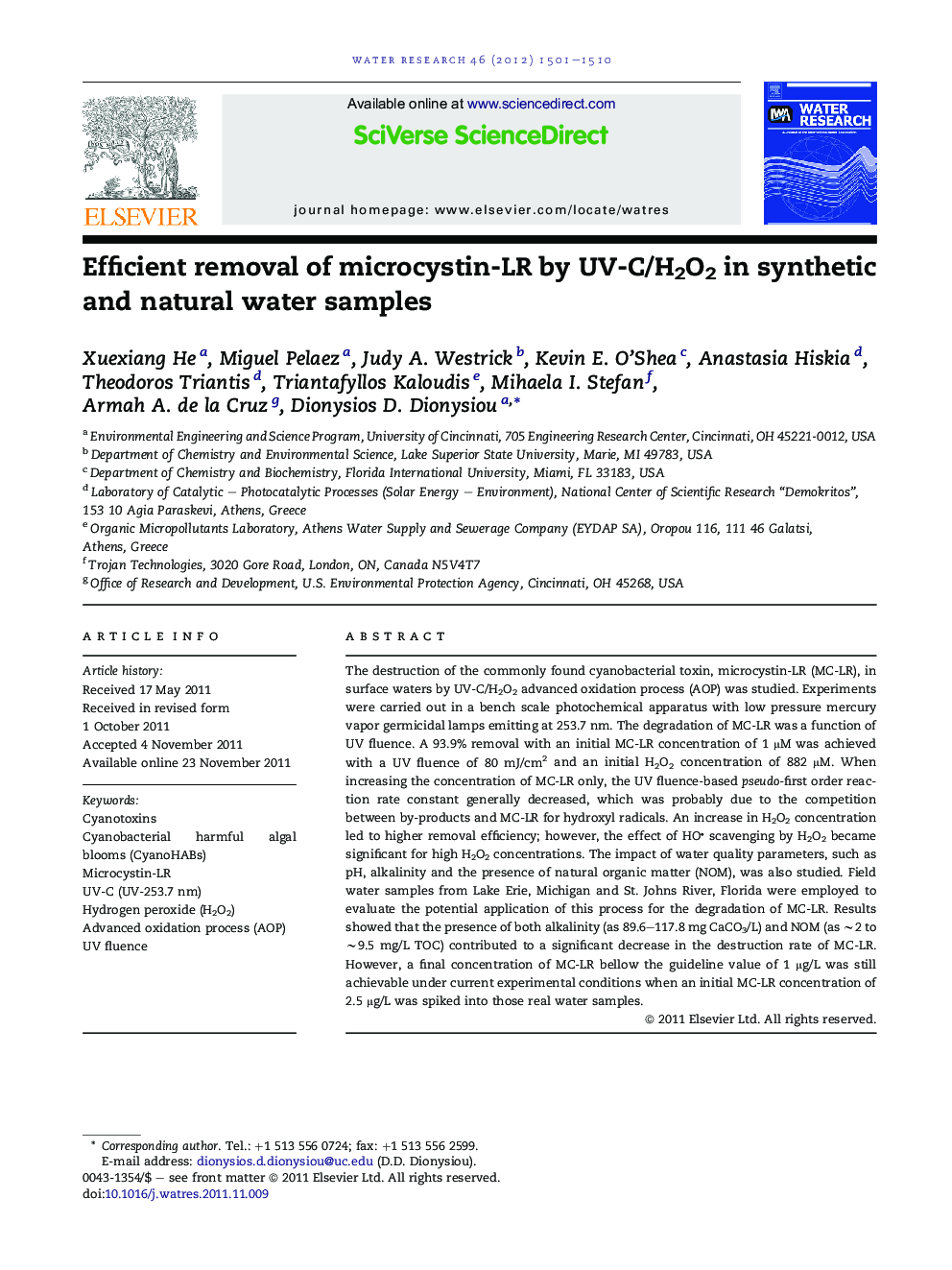| کد مقاله | کد نشریه | سال انتشار | مقاله انگلیسی | نسخه تمام متن |
|---|---|---|---|---|
| 4483630 | 1316894 | 2012 | 10 صفحه PDF | دانلود رایگان |

The destruction of the commonly found cyanobacterial toxin, microcystin-LR (MC-LR), in surface waters by UV-C/H2O2 advanced oxidation process (AOP) was studied. Experiments were carried out in a bench scale photochemical apparatus with low pressure mercury vapor germicidal lamps emitting at 253.7 nm. The degradation of MC-LR was a function of UV fluence. A 93.9% removal with an initial MC-LR concentration of 1 μM was achieved with a UV fluence of 80 mJ/cm2 and an initial H2O2 concentration of 882 μM. When increasing the concentration of MC-LR only, the UV fluence-based pseudo-first order reaction rate constant generally decreased, which was probably due to the competition between by-products and MC-LR for hydroxyl radicals. An increase in H2O2 concentration led to higher removal efficiency; however, the effect of HO scavenging by H2O2 became significant for high H2O2 concentrations. The impact of water quality parameters, such as pH, alkalinity and the presence of natural organic matter (NOM), was also studied. Field water samples from Lake Erie, Michigan and St. Johns River, Florida were employed to evaluate the potential application of this process for the degradation of MC-LR. Results showed that the presence of both alkalinity (as 89.6–117.8 mg CaCO3/L) and NOM (as ∼2 to ∼9.5 mg/L TOC) contributed to a significant decrease in the destruction rate of MC-LR. However, a final concentration of MC-LR bellow the guideline value of 1 μg/L was still achievable under current experimental conditions when an initial MC-LR concentration of 2.5 μg/L was spiked into those real water samples.
Figure optionsDownload high-quality image (129 K)Download as PowerPoint slideHighlights
► The degradation of MC-LR is significantly improved by UV-C/H2O2 than by UV-C only or H2O2 only conditions.
► The degradation of MC-LR follows pseudo-first-order reaction kinetics.
► The impact of pH is mild under neutral or slightly basic conditions.
► H2O2 reacts as an initiator or inhibitor, depending on the concentration.
► Natural organic matter and alkalinity impact the performance of UV-C/H2O2 process in both synthetic and real water samples.
Journal: Water Research - Volume 46, Issue 5, 1 April 2012, Pages 1501–1510